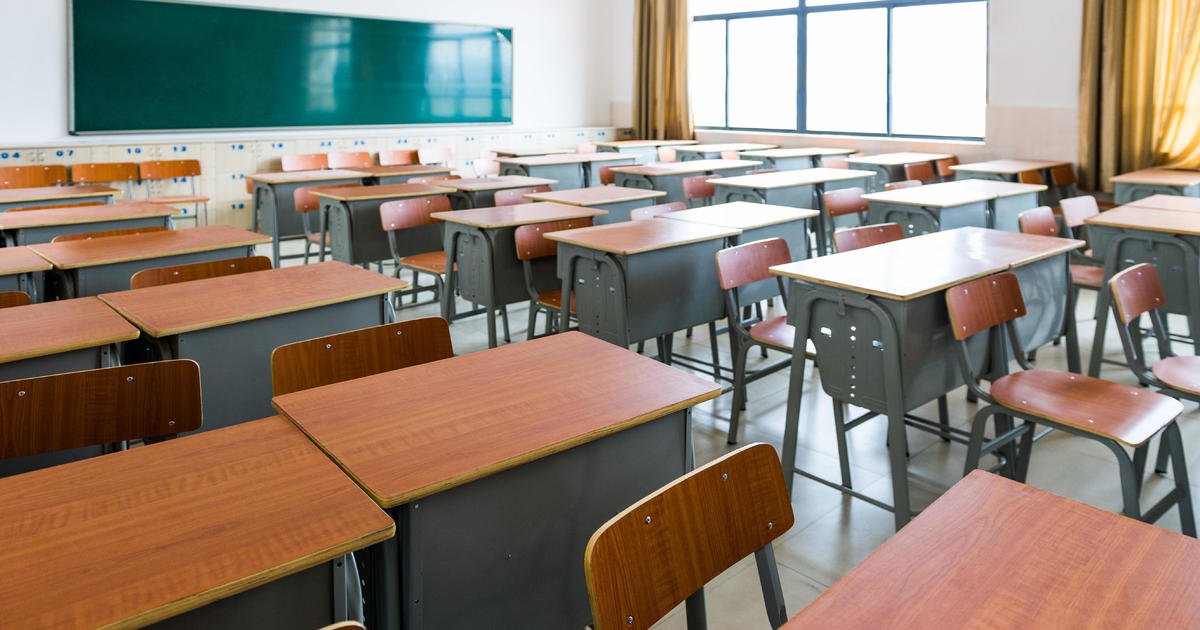Tech Tour Day Two: Solar Power, Star Trek Replicators, New Drugs At Michigan Tech
HOUGHTON -- Solar power, Star Trek replicators, new antiviral drugs, more green energy, and a research showplace for the Great Lakes.
Yep, just another day at Michigan Technological University Friday as the Great Lakes Innovation and Technology Report 2012 Fall Tech Tour got into full swing.
The visit started with Joshua Pearce, associate professor in the Department of Materials Science and Engineering, a passionate advocate and researcher in both advanced solar energy and so-called 3D printing.
Pearce is working on flexible thin-film solar panels of the type pioneered by the now-bankrupt Energy Conversion Devices of Rochester Hills. ECD saw its solar sales crumble due to cheap panels being produced in huge quantities in China.
Pearce said the current glut of solar panels and the solar energy trade war with China "are temporary problems. There's no question that solar will eventually be a significant percentage of our energy production. All you do is look at the graph of solar prices."
Based on China's cheap panels, the United States has slapped tariffs of 24 percent to 250 percent on Chinese solar equipment, Pearce said. But once the trade dispute is settled, he said he believes thin film solar panels will emerge as the superior technology and will go into wide use in residential settings. He said he has "extreme hope for the future, and that's why I still work on this stuff ... We think of the solar industry as the solar industry, not the energy industry. We need to think of it as part of the energy industry, it's competing with coal." And the Chinese are heavily supporting their PV industry, he said, because they want to ensure market share dominance of the next dominant energy
Three-dimensional printing, meanwhile, started out as a way to build prototype parts quickly. Machines lay down sandwiches of resin or plastic filament in three dimensions, following computer aided engineering instructions, creating incredibly precise copies of complex shapes.
Today there's a whole open-source cottage industry of 3D printers, which can make a dizzying array of complex plastic parts. (Including parts for 3D printers, which is wonderfully meta.)
Pearce is now working on a "recyclebot" that takes old milk jugs and turns them into the plastic filament that is the raw material of 3D printing. That will reduce the cost of parts produced by 3D printers "to essentially zero," Pearce said.
And Pearce said he's sure others in the open source community will quickly improve on the design of that recyclebot, and of his and his students' custom built 3D printers.
If that sounds like something that might just very quickly blow up some industries, Pearce says you're right. He and his students have already saved thousands of dollars by making laser welder system parts and laboratory jacks that move optics equipment up and down.
------------------------------------------------
Next I stopped in on Sean J. Kirkpatrick, professor and the new chair of Michigan Tech's Department of Biomedical Engineering.
A graduate of Gannon University and the University of Miami, Kirkpatrick spent 15 years at Oregon Health Science University in Portland, Ore. While there, he helped establish a graduate level biomechanics program, and Kirkpatrick said he found he liked that role of program development.
When a similar opportunity opened up at Michigan Tech, he applied for it and got the job.
"Our vision is pretty simple," Kirkpatrick said. "We realize we are not going to compete with Ann Arbor's biomedical engineering program at the graduate level. Probably only three or four places in the country can. So we want to focus on our research and on producing the best biomedical engineering at the bachelor's level in the upper Midwest, if not beyond. I spend a lot of time talking to industry representatives, Medtronic, 3M, Zimmer, Boston Scientific, Kimberly Clark, saying, 'OK, what are you looking for in graduates, what do you need, how do you see biomedical engineers fitting into your corporation.' Based on that information we threw out the old curriculum and implemented a new one. It's aimed at producing very hard core specialized engineers who know mechanics. We've increased the emphasis on simulation and computer programming, and our students are forced to integrate the statics and dynamics of mechanical engineering into the sciences of cellular and molecular biology."
Kirkpatrick currently has 300 undergraduates in the Michigan Tech program, and about 20 master's and Ph.D. students "in a program that's high on my radar screen to increase in size." It has nine tenured and tenure-track faculty, with a search under way for a 10th faculty member.
In Kirkpatrick's department labs are many fascinating experiments. I saw a glass-metallic hybrid item with the ability to sense temperatures and pressures inside the human body when exposed to a magnetic field. Another experiment is a polymer that releases nitric oxide when exposed to light, which could be used for internal sensors that don't create blood clots in the body, since nitric oxide is the blood gas that keeps your own platelets from sticking to the inside of your own blood vessels. There's also work on regenerating the lymphatic system after breast cancer surgery to prevent lymphoedema, a painful, debilitating swelling of the arms caused by lymph system damage after a mastectomy.
The biomed engineering program is important to Michigan Tech, too, because the school is trying to increase its female enrollment beyond the current 24 percent -- and the biomedical engineering enrollment is 42 percent women, the highest percentage in the college of engineering.
Kirkpatrick himself works in the field of biomedical optics, using lasers and other light sources for medical imaging, diagnostics and treatment of diseases.
He said one big goal is to boost the amount of sponsored research per professor from the current $100,000 a year to $250,000 a year.
-------------------------------------------------------
Next up was Caryn L. Heldt, assistant professor of chemical engineering. Heldt graduated in 2001 from Michigan Tech with a bachelor's degree in chemical engineering and chemistry. Then she worked for BASF in the Detroit area and in Texas for a few years before getting her Ph.D. in chemical engineering from North Carolina State in 2008. She's been at Tech now for two years.
Heldt's research focus is the removal of pathogens from water and biotherapeutics.
Part of that research is characterizing the structure of amyloids, proteins that aggregate in the body and cause diseases ranging from Alzheimer's to Parkinson's to Huntington's, and attempting to determine just what makes them toxic.
She's also working on virus detection for disease prevention, and virus purification for vaccine production.
And she's working on antiviral compounds, work that could lead to new antiviral drugs. Compounds called osmolytes have strong antiviral properties even when applied to cells exposed to virus hours after the exposure, and the antiviral effect lasts a long time.
-------------------------------------------------------------
Then it was up one of Houghton's many steep hills to Michigan Tech's absolutely gorgeous forestry building, which features murals of famous art works and historic pictures fashioned out of three-dimensional wood.
In that building, Audrey Mayer, associate professor in ecology and environmental policy, is working on a $1.8 million grant from the National Science Foundation to study the social aspects of implementing green energy policies.
Mayer said that as we turn to a sustainable future, people will have to learn to see part of the forest as a farm. In fact, there's a joking reference to poplar trees as "poplar grass," since they grow so quickly and are harvested by large mowers for biomass to generate electricity.
Mayer said there's a visceral opposition in parts of the UP to using forest lands to create wood chips. People seem to view wood chips as an inferior waste product, unworthy of export that somehow brands them as a colony shipping out raw materials -- yet those same people are fine seeing truckloads of huge trees leaving the UP.
Mayer is working with Michigan Tech professor David Shonnard on the overall project, called Sustainable Energy Pathways.
"We will be generating scenarios of what the landscape will look like if any kind of cellulosic ethanol or wood chipping biomass burning gets going, what that might look like in the UP," Mayer said.
------------------------------------------------------------------------
My final visit of a busy Friday afternoon was at Michigan Tech's latest amazing showplace building -- the $25 million, 50,000-square-foot Great Lakes Research Center, a new building that quite literally brings Lake Superior into the Michigan Tech classroom.
Tech's campus hugs Portage Waterway, the geographic name for the part of Lake Superior that bisects the Keweenaw Peninsula, making the northern Keweenaw technically an island. But like a lot of places in the U.P., that waterfront was pretty much ignored or used for industrial uses like fuel storage -- or even parking lots.
No longer. The GLRC building rises from the river in front of Tech's other science buildings, its classrooms and laboratories intended to help students -- and all of us -- learn more about the world's largest freshwater system.
The center is led by Guy Meadows, who spent the previous 35 years at the University of Michigan, most recently as a professor of physical oceanography. He said he left Ann Arbor for Houghton for "this opportunity to lead an integrated facility to study the Great Lakes. The setting of this building, how they did this on campus, it's remarkable. We have deep water access right out the front door."
Meadows said the impetus for the building came from Tech's faculty.
"Over about a 10 year period, faculty said this is what you need if you really want to help solve the problems of the Great Lakes," Meadows said.
The center has 25 staff and graduate students from three colleges and six departments within the university, who will study hydrology, fisheries, stream ecology, public policy, environmental policy and more. They'll produce new data on lake levels, wind, waves, current, water quality and other information crucial to understanding how the ecosystems of the Great Lakes, so critical to so many sectors of the region's economy, work.
The center also saw the creation of six new faculty positions, four of which have been filled and two of which are still being sought -- one in sustainable engineering, the other in hydrodynamics.
The center is also home to a 36 foot research vessel, the R/V Agassiz, and several smaller vessels, as well as the new research buoy system called the Upper Great Lakes Observing System.
The building will also be home to a supercomputer center expected to be operational by Jan. 1.
------------------------------------------------------------------
And so my first day in Houghton ended. And to think I'm less than halfway done meeting people at Michigan Tech!
(For full Tech Tour coverage, visit this link).



